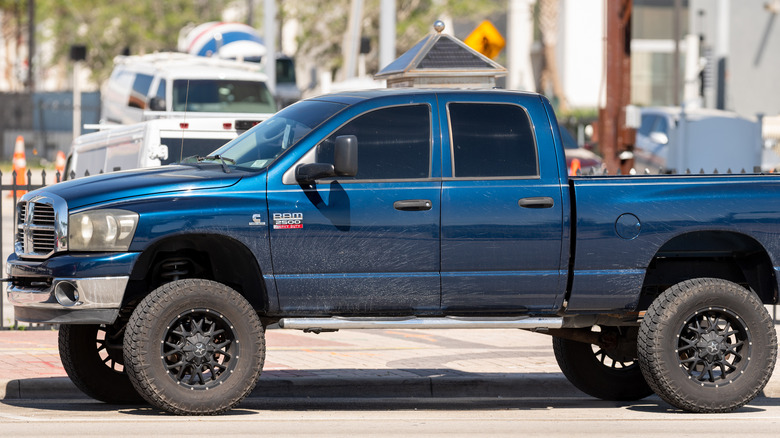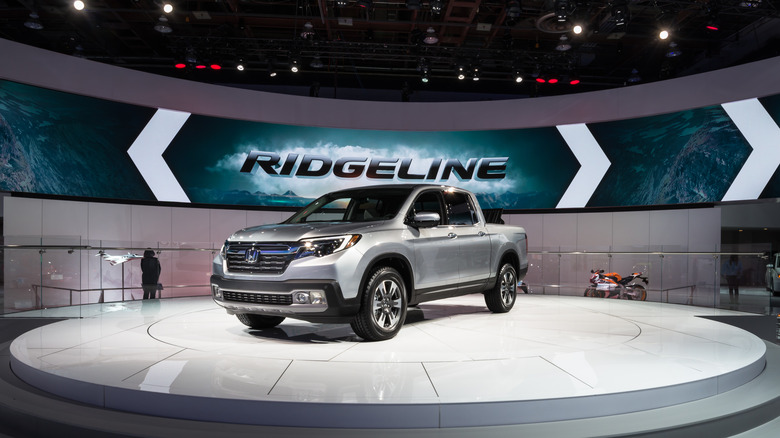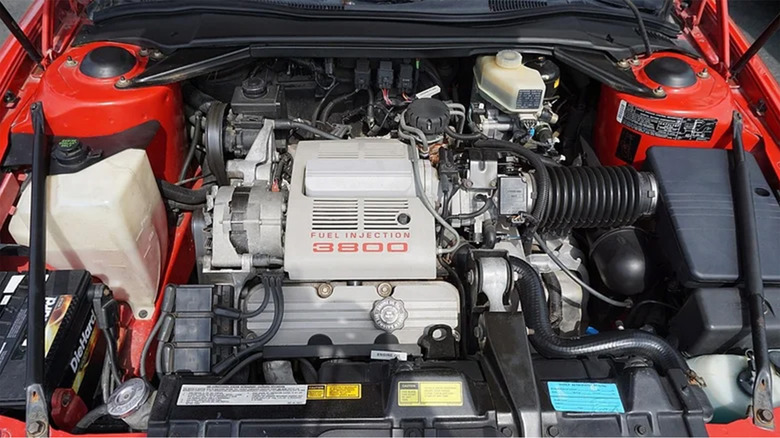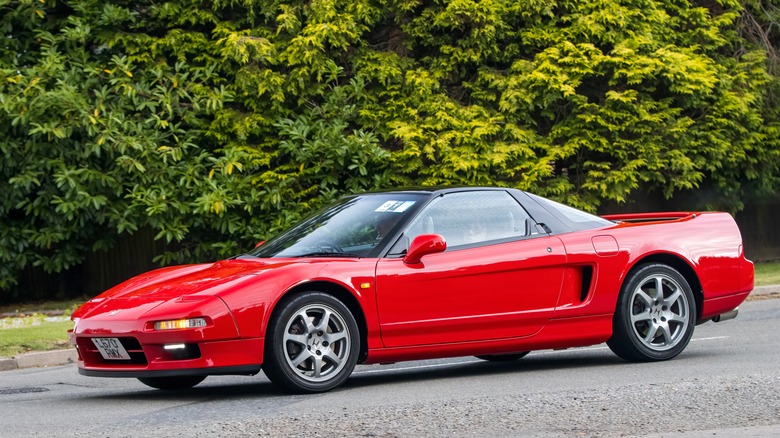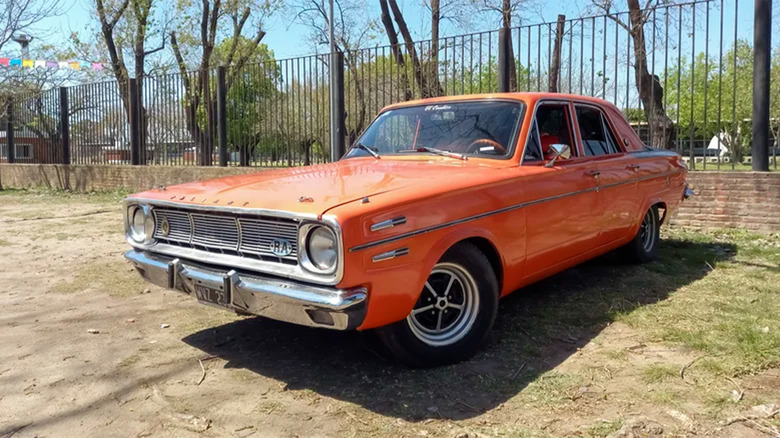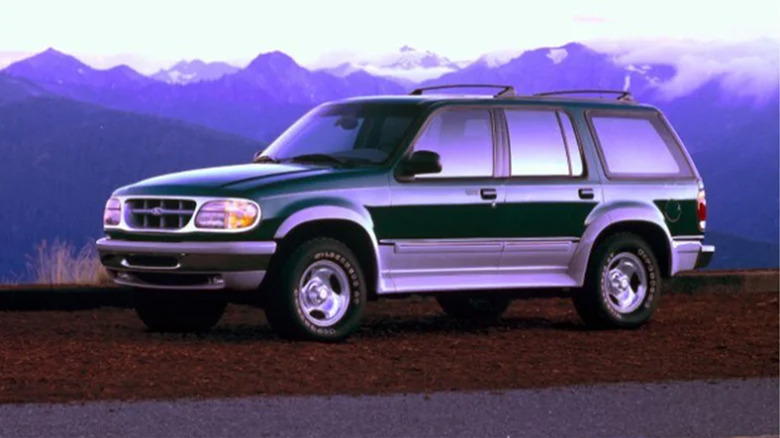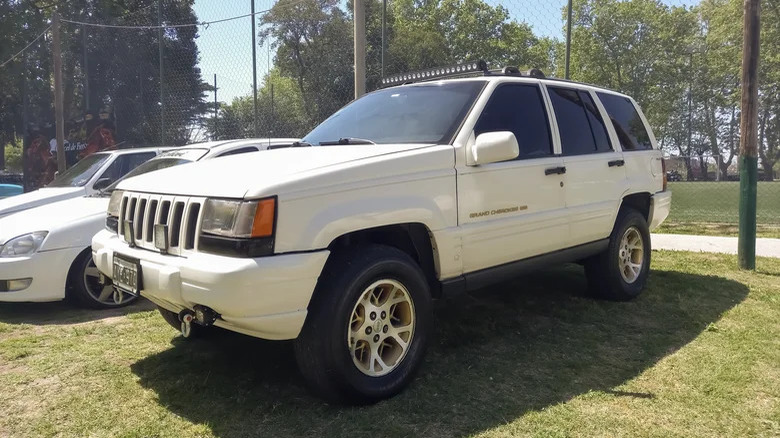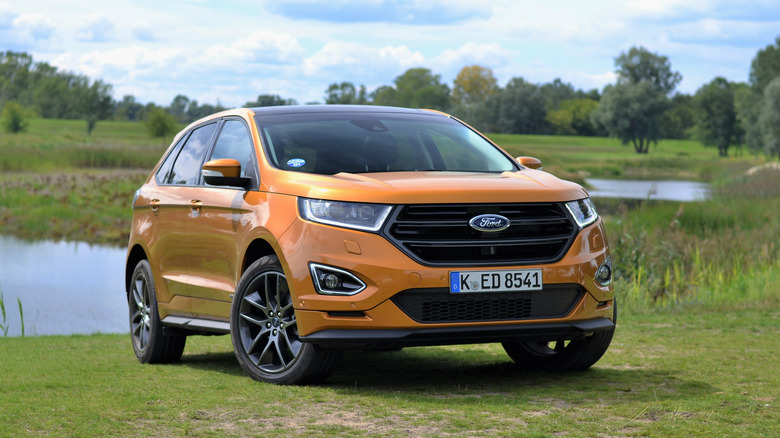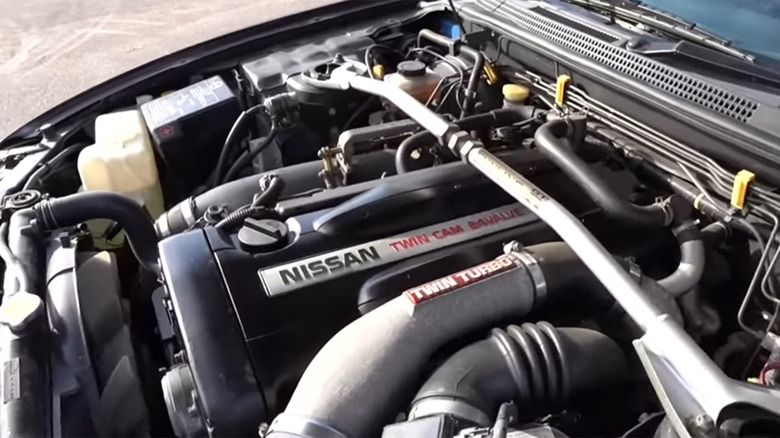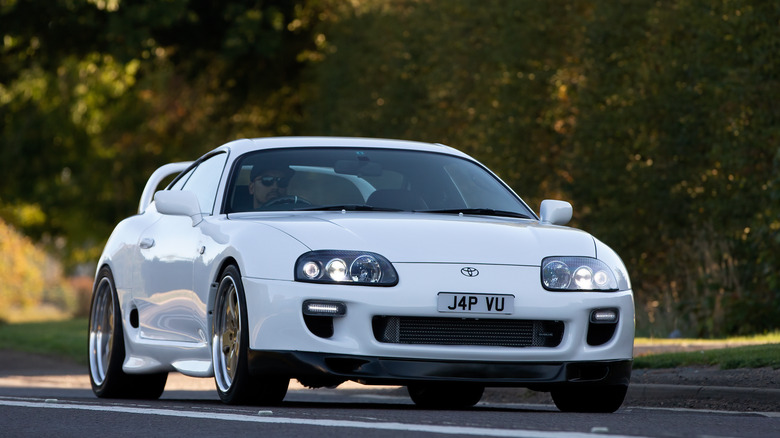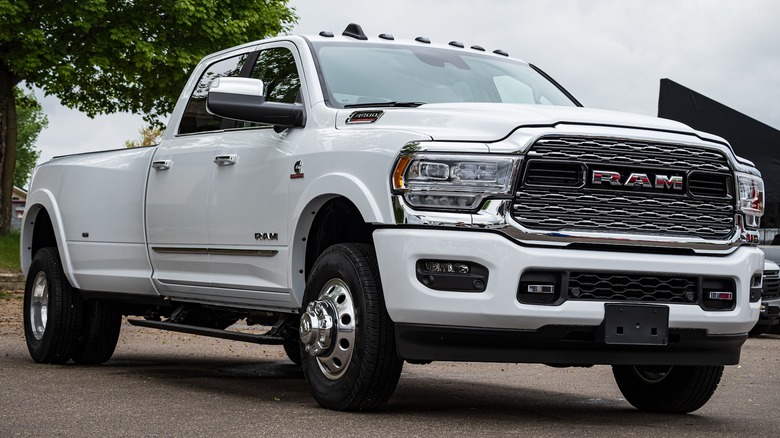10 Of The Most Reliable Six-Cylinder Engines Ever Made
Six-cylinder engines have been around for more than a century and have been an integral part of automobiles almost the entire time. BMW, in particular, is quite fond of the inline six not just for cars, but also for aircraft. It makes sense. We've seen the six-cylinder engine in everything from family haulers to sports cars and work trucks. It fits surprisingly well into almost any type of vehicle, and that adaptability has helped solidify the six-cylinder engine as a go-to for many auto brands for a long time.
They are also a nice compromise between the smaller, more fuel-efficient four-cylinder and the larger, gas-guzzling, and more powerful eight-cylinder engine. The auto industry in general is headed for smaller engines, hybrids, and EVs for the sake of fuel economy and emissions standards, but there are still a few six-cylinder engines left in the world. When they're gone, a truly great era in automaking will come to an end.
So, let's talk about some of the great six-cylinder engines. Like every other category of engine, there were some genuinely great engines in this space along with some big clunkers. However, the six-cylinder engines that made their way to the top of the reliability list not only made drivers happy for years, but also helped put automakers on the map. Today's automobile landscape would be vastly different if some of these engines didn't exist. Plus, the most reliable six-cylinder engines wound up in some of the most iconic vehicles in history. Here are the most reliable ones we could find.
Honda J35 V6
Let's start the list with the Honda J35 3.5-liter V6 engine, one of the best engines Honda ever made. The engine officially launched in 1998 and has been a mainstay of Honda's lineup ever since. It's mostly found in Honda's larger vehicles, like the Honda Ridgeline, Honda Pilot, and Honda Passport. People and Honda both seem to really like this engine. After all, Honda still uses it, and people are still buying it. In fact, Honda just put the latest iteration of the J35, the J35Y8, in the 2023 Honda Pilot.
There are three main generations of the J35. They start with the original J35A that lasted from 1998 to 2008. Following that was the J35Z from 2006 through the 2017 model year. Finally, the J35Y, which debuted in 2013 and is still around today. Each generation of the engine has multiple variants, so keeping track of all of them is a bit of a rough task. However, even the worst models of the J35 are still above average in terms of reliability, according to most authorities on the matter.
One of the reasons this engine has been around for more than two decades is its reliability. No engine is perfect, so you can find issues with the J35. However, most of the issues are fairly minor and easy to fix. For example, one such issue in some J35 engines is a VCM system that can cause an oil leak. Simply replace the old gaskets with new ones and you're good to go. It's not uncommon to see J35 engines go around 200,000 miles before having any serious issues, and there are examples of engines that have gone way further.
Buick 3800
The Buick 3800 is one of the most reliable engines that GM ever built. It existed in several forms for a few decades under various names before a revamp of the engine in 1988 officially gave it the 3800 name. Buick, and a few other GM brands, used the engine until 2008, which was 10 years longer than Buick originally intended to keep the engine. You'll find this engine in the Buick Regal, LeSabre, and Park Ave. GM also used the engine the Chevy Monte Carlo, Oldsmobile Eighty-Eight, Pontiac Bonneville and Grand Prix, and several other vehicles.
The term "bulletproof" gets tossed around a lot, but the Buick 3800 epitomized the term. GM over-engineered the engine block and gave it robust internals that were hard to destroy. Plus, the engine was easy to work on, so minor issues could be corrected quickly before they turned into more serious problems. There were three total generations of the Buick 3800. The LN3 came first, followed by the L27, also known as the Series I. After that came the Series II, which was the final iteration of the engine.
It's not terribly surprising to find cars equipped with Buick 3800s lasting upwards of 250,000 miles or even higher. This story is a good one to demonstrate how great these engines were. The writer's wife had an Oldsmobile with the Buick 3800 Series II. A mechanic botched a coolant job, and coolant flooded the engine, eventually rendering it unrepairable. However, despite the fact that four of the six cylinders were flooded with coolant, the remaining two cylinders drove the car onto the flatbed to be taken to the junkyard. They don't make them like that anymore.
Honda C-Series
We return to Honda for our next entry, the Honda C engine. Not only was this Honda's first six-cylinder engine, but the company produced it from 1985 until 2005, giving it a healthy 20-year lifespan. Honda put this engine in a variety of vehicles, including sports cars like the NSX and Legend from both Honda and Acura, along with Honda Inspire and several others. The Honda and Acura NSX was particularly noteworthy because it was a cheaper, more practical sports car than others of its era while still being quick for its day.
There were several generations of the C engine, including the C20A, C20AT, C25A, C27A, C30A, C32B, C32A, and the C35A. In terms of reliability, most of the credit goes to the C30A and the C32B, which were around in the 1990s. It's difficult to find official numbers in regard to common engine problems across the entire lineup, but the Honda C-series engines comes up time and again in reliability conversions for Honda engines on both websites and forums across the internet.
Given the crossover between the Honda C-series and J-series engines, that means Honda has never really had a bad six-cylinder engine. Unfortunately, like the rest of the automotive industry, Honda is also going full steam ahead on smaller engines and electrification. That means that, eventually, the six-cylinders will disappear from Honda's lineup. For now, they are still there, even though Honda hasn't made a C engine in almost 20 years at this point. The J35 engines picked up right where the C engines left off.
Chrysler Slant Six
The Chrysler Slant Six was one of the most iconic engines of its day. Chrysler built this engine from 1960 through 1984 for many vehicles in its lineup and then continued to use it for an additional three model years in the Dodge Ram. It began life as a 225-horsepower engine, but eventually wound up much less powerful than that due to the emission standards changes in the 1970s. The engine was made smaller to combat the growing threat of smaller cars from overseas and helped usher in the smaller car craze in America.
There are a variety of models of the Chrysler Slant Six, as is typically the case with engines that are manufactured for more than two and a half decades. It also helped that Chrysler shoved them into everything from Dodge trucks to compact cars. Chrysler reportedly made millions of these things and put them into whatever the company could make with four wheels. While most cars lived fruitful lives, there are multiple stories online of people seeing 300,000 or more miles out of this engine.
By the end of its tenure, it was still a decent engine, but the aforementioned emissions standards and the advancement of engine technology eventually rendered the slant six obsolete. Chrysler would eventually turn to other engines, which signaled the end of an era for the company. Chrysler would replace the slant six with diesel, V6, and V8 engines, although none of them became quite as well known for reliability as the slant six.
Ford 300
The Ford 300 was one heck of an engine. It was not only known for its absurd reliability, but also for its longevity in the market. Ford produced them from 1965 all the way through the 1996 model year, giving it one of the longest manufacturing runs of any engine on the list. The inline-six produced anywhere from 101 to 170 horsepower along with 223 to 283 lb-ft of torque, depending on which generation of the engine we're talking about. The first generation was the most popular overall, before the notorious emissions laws of the 1970s took it away. However, the engine regained much of its power by the end of its run.
Ford tossed this engine into a lot of different vehicles, including the F-100, F-150, Bronco, and several others. Ford also shoved this thing into various other types of machines, including woodchippers, power generators, and even tractors. Ford also sourced the engine to UPS for use in the company's delivery vans. In short, this engine was everywhere, and Ford made a killing off it.
So, how reliable were these engines? Well, Ford hasn't produced one since the mid-1990s and there are still vehicles on the road today that have it, including those old UPS trucks. The engine was very easy to service, which helped extend its life by making minor problems easier to fix. It's not uncommon to see the engine pull in 300,000 miles with minor repairs and maintenance. What makes that even more impressive is that it was often installed into vehicles that were built for work, so the engines didn't exactly live the easiest life and it still pumped out the miles.
Jeep 4.0 Inline-Six
Today's Jeeps are built pretty well, but the Jeep 4.0 inline-six was one of the greats. Jeep built the engine from 1986 through the 2006 model year, which is a respectable lifespan for a car engine. There are plenty of stories online about these engines hitting 300,000 miles or more, with many more crossing the 250,000 line without too much drama. It was known for being relatively easy to fix due to its simplicity, so even home mechanics could keep this running for years and years.
What makes the Jeep 4.0 even more impressive is the general way that people treat Jeeps. So, while there are stories out there of other engines getting more miles, it's worth considering that people beat up their Jeeps, and this engine took it like a champ. After all, 250,000 miles spent rock climbing is a lot harder on an engine than 400,000 highway miles. That said, the engine did have the occasional problem depending on the generation, and diagnosing the issues could be occasionally difficult.
Jeep put the engine in the legendary Wrangler along with the Cherokee, Grand Cherokee, and a few other vehicles throughout the 1990s. Thus, folks who owned one of those vehicles from back then know all about how the 4.0 drove. Unfortunately, the follow-up to the Jeep 4.0 was the 3.8-liter OHV, which was fine for a lot of folks, but had its own set of issues and flaws. It also made its power higher in the RPM range, which gave it less low-end power than the 4.0 — an attribute outdoorsy Jeep owners appreciated.
Ford EcoBoost 3.5-liter Cyclone
Ford returns to the list with the Ford EcoBoost 3.5-liter Cyclone. This engine essentially succeeded the Ford 300, although it didn't officially go into production until 2007. Ford still uses variants of the 3.5-liter Cyclone today. Much like the Honda J35, there are several generations that Ford has stuffed into just about every vehicle in its lineup, including the Ford Edge, Explorer, Flex, Fusion, and F-150. Ford also lends the engine to Lincoln for use in the MKX and MKZ. Surprisingly, it's also made an appearance in some Mazda CX-9 models.
It also happens to be a very reliable engine. There is a history of issues with the water pump, both in terms of design within the engine bay and the water pump's tendency to leak. However, if you can keep the water pump going, these engines continue to work for many miles. Most issues with Ford's vehicles that come with the 3.5-liter have little to do with the engine, although there are a few recalls to be aware of. However, that is entirely based on not only year, but also the vehicle. The F-150s with the Cyclone are as reliable as it gets for a modern vehicle.
Ford still uses these engines and have for the last 15 years, so they're well on their way to putting up a Ford 300-like lifespan. Ford also created a hybrid variant of this engine, most notably for the 2020 Ford Explorer. That means this V6 might actually last into Ford's latest electrification efforts, giving it better staying power than some other six-cylinder engines.
Nissan RB26DETT
While we are no strangers to the occasional overstatement by a blogger or journalist, there are few engines out there that have been described as spectacularly reliable. The Nissan RB26DETT is one such engine. It's part of the RB engine family that was in development in some capacity by Nissan from 1985 to 2004. That's usually how these things go with engines. However, Nissan actually turned back the clock in 2019 when it put the RB26 inline-six back into production. How many engines get discontinued and then revived? Not many.
Nissan purpose-built the RB26-series engine for the aforementioned Skyline GT-R, and that's the car that got the most use out of the engine. The story goes that Nissan was trying to win in the racing circuit, but failed due to the engine not being able to withstand high-speed, high-boost conditions. Thus, Nismo, Nissan's racing arm, built the most powerful and resilient engine it could. That engine was the RB26DETT, which would go on to win multiple races in the early 1990s. Thus, the engine became highly reliable in day-to-day driving, since it could handle much harder use than that without any issues.
Unfortunately, this is essentially a sportscar engine, so Nissan didn't bother putting it into their regular lineup. It would've been quite the sight to see a scaled-down version of the RB26DETT in Nissan's other products. There were several other variants of the RB-series engine, but the RB26DETT was arguably the best one.
Toyota 2JZ-GE
Toyota was inevitably going to end up the list, given that it builds some of the most reliable engines we've ever seen. The 2JZ-GE is one such engine. Toyota made the engine, or some variant of it, from 1991 through 2007. It's a 3.0-liter inline-six that punched way above its weight class. Toyota also made the 2JZ-GTE and 2JZ-FSE that were more or less the same engine with some minor modifications. For example, the 2JZ-GTE was a twin-turbo engine while the 2JZ-GE was naturally aspirated and the 2JZ-FSE was only offered with an automatic gearbox.
It famously powered the Toyota Supra in the 1990s, which is what it's best known for. However, Toyota also used the engine in the Crown, Chaser, Origin, Progres, and Altezza. Lexus used the engine as well for the SC 300, GS 300, and IS 300. The engine was considered reliable in all of its configurations, thanks to its excellent engineering. It's not only common for the engine to make it to 250,000 miles, but it's almost expected to do so in most circumstances, if the engine is maintained well enough.
One of the hallmarks of the 2JZ engine was how well aftermarket modders could tune it. You can find examples of this engine being tuned to 2,600 horsepower and no, that is not a typo. There are stories of people tuning these engines with most of its stock parts to 1,000 horsepower or more. That also helps prove its reliability because unreliable engines can't be tuned that high. Toyota had a real winner with this one and it's a shame it wasn't used in more vehicles.
Cummins Diesel
The Cummins diesel engine is one of the most reliable engines ever built. It made its debut in the Dodge Ram back in 1989 and was an engine option in the popular truck until 2023. Dodge announced that it would discontinue one key diesel option in the 2024 model year Ram 1500. That's a shame, because Dodge Ram trucks with that engine are virtually impossible to kill as long as you conducted proper maintenance. Before its demise, you could find this engine in the Dodge Ram 2500, 3500, 4500, and 5500. It also made an appearance in the Nissan Titan XD.
What made this engine so great? It was capable of putting down 160 horsepower and a formidable 400 lb-ft of torque at 1,600 RPM, which is bonkers. Later variants could do 325 horsepower and 600 lb-ft of torque. In short, it could probably pull a house off its foundation if you really wanted it to. It also achieved approximately 33 MPG in fuel economy on the highway. Good luck getting that with a normal gas engine. Consumer Reports says that the engine could do 300,000 miles without many issues, which is especially impressive given the work it was expected to do.
However, there are stories out there of the Cummins diesel putting up 600,000 miles or even more with proper maintenance and minor repairs. It's true that other diesel engines can do this as well, and that's likely the cheat code for the Cummins engine. Diesel engines just typically last far longer than their gasoline-burning counterparts — and it'll be a bummer if they're ever phased out completely.
